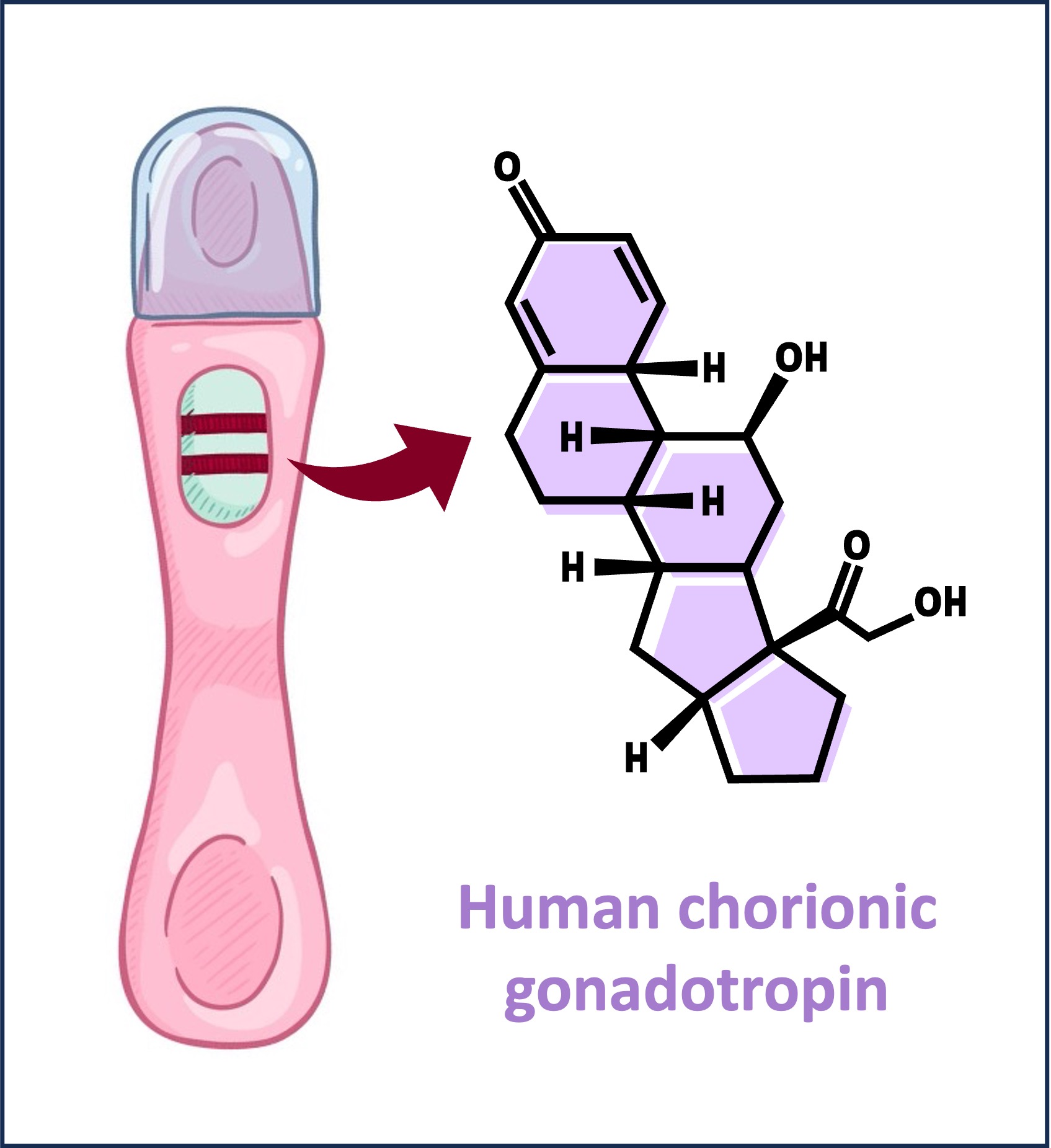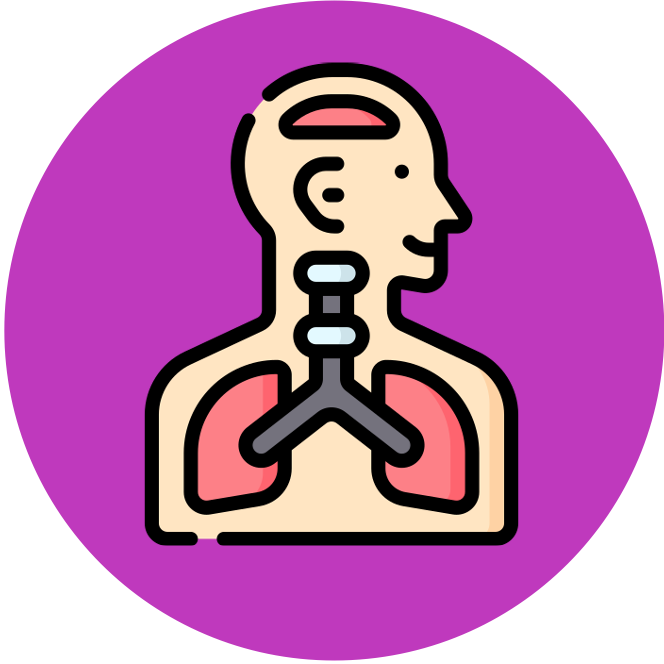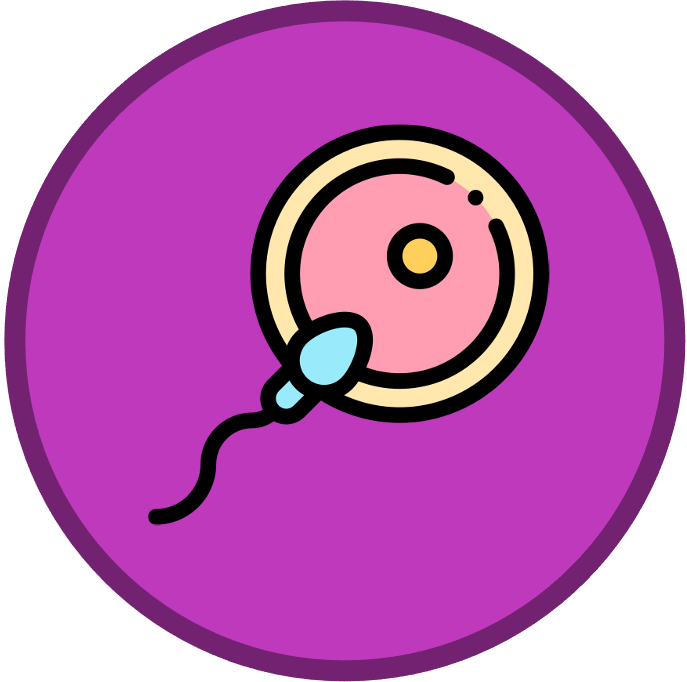

Pregnancy
When a blastocyst becomes implanted in the endometrial lining it begins to secrete human chorionic gonadotropin (hCG)
-
hCG promotes the maintenance of the corpus luteum within the ovary and prevents its degeneration
As a consequence of this, the corpus luteum survives and continues to produce both oestrogen and progesterone
-
Oestrogen inhibits FSH and LH production by the pituitary gland, preventing the release of more eggs from the ovaries
-
Progesterone also functions to maintain the endometrium (which is nourishing the embryo) and thicken the cervix
The levels of hCG are maintained for roughly 8 – 10 weeks while the placenta is being developed
-
After this time, the placenta becomes responsible for progesterone secretion and the ccorpus luteum is no longer required (hCG levels drop)
During early pregnancy, small amounts of hCG are excreted in urine and can be detected using monoclonal antibodies
-
Monoclonal antibodies are laboratory-produced proteins designed to target specific molecules (such as hCG)
-
A pregnancy test kit contains two anti-hCG antibodies – one immobilised and one fixed to a colour-changing enzyme
-
When a pregnant woman urinates on the pregnancy test, the two enzymes form a complex with hCG and produce a detectable band
Human Chorionic Gonadotropin






